-
 Bitcoin
Bitcoin $106,754.6083
1.33% -
 Ethereum
Ethereum $2,625.8249
3.80% -
 Tether USDt
Tether USDt $1.0001
-0.03% -
 XRP
XRP $2.1891
1.67% -
 BNB
BNB $654.5220
0.66% -
 Solana
Solana $156.9428
7.28% -
 USDC
USDC $0.9998
0.00% -
 Dogecoin
Dogecoin $0.1780
1.14% -
 TRON
TRON $0.2706
-0.16% -
 Cardano
Cardano $0.6470
2.77% -
 Hyperliquid
Hyperliquid $44.6467
10.24% -
 Sui
Sui $3.1128
3.86% -
 Bitcoin Cash
Bitcoin Cash $455.7646
3.00% -
 Chainlink
Chainlink $13.6858
4.08% -
 UNUS SED LEO
UNUS SED LEO $9.2682
0.21% -
 Avalanche
Avalanche $19.7433
3.79% -
 Stellar
Stellar $0.2616
1.64% -
 Toncoin
Toncoin $3.0222
2.19% -
 Shiba Inu
Shiba Inu $0.0...01220
1.49% -
 Hedera
Hedera $0.1580
2.75% -
 Litecoin
Litecoin $87.4964
2.29% -
 Polkadot
Polkadot $3.8958
3.05% -
 Ethena USDe
Ethena USDe $1.0000
-0.04% -
 Monero
Monero $317.2263
0.26% -
 Bitget Token
Bitget Token $4.5985
1.68% -
 Dai
Dai $0.9999
0.00% -
 Pepe
Pepe $0.0...01140
2.44% -
 Uniswap
Uniswap $7.6065
5.29% -
 Pi
Pi $0.6042
-2.00% -
 Aave
Aave $289.6343
6.02%
Which is better to use, WR or CCI? How to analyze WR in combination with OBV?
WR and CCI help traders spot overbought/oversold crypto markets; WR's sensitivity suits short-term trades, while CCI offers broader trend insights.
Jun 14, 2025 at 10:35 pm
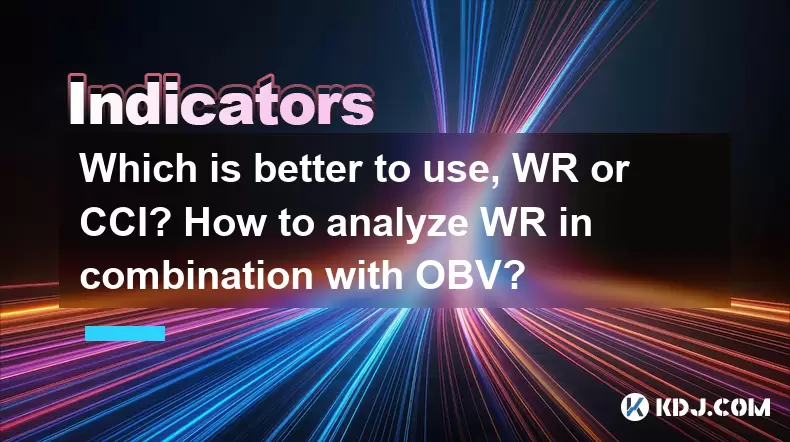
In the realm of cryptocurrency trading, technical analysis tools like the Williams %R (WR) and the Commodity Channel Index (CCI) play crucial roles in helping traders make informed decisions. Both indicators are used to identify overbought and oversold conditions in the market, but they have distinct differences in their calculations and applications. This article will delve into a detailed comparison of WR and CCI, and then explore how to analyze WR in combination with the On-Balance Volume (OBV) indicator.
Understanding Williams %R (WR)
Williams %R, often referred to as WR, is a momentum indicator developed by Larry Williams to identify overbought and oversold levels. The indicator ranges between 0 and -100, with readings above -20 indicating overbought conditions and readings below -80 indicating oversold conditions. The formula for WR is:
[ \text{WR} = \frac{\text{Highest High} - \text{Close}}{\text{Highest High} - \text{Lowest Low}} \times -100 ]
WR is particularly useful in volatile markets like cryptocurrencies, as it can help traders spot potential reversals. The indicator is sensitive to price changes, making it suitable for short-term trading strategies.
Understanding Commodity Channel Index (CCI)
The Commodity Channel Index (CCI), developed by Donald Lambert, is another popular technical indicator used to identify cyclical turns in commodities, but it has found widespread use in other markets, including cryptocurrencies. The CCI measures the difference between a security's price change and its average price change. High values indicate that prices are above the average, while low values indicate that prices are below the average. The formula for CCI is:
[ \text{CCI} = \frac{\text{Typical Price} - \text{SMA of Typical Price}}{\text{0.015} \times \text{Mean Deviation}} ]
Typical Price is calculated as the average of the high, low, and close prices. The CCI is typically considered overbought above +100 and oversold below -100. Unlike WR, CCI is less sensitive to price changes and can be used for both short-term and long-term trading strategies.
Comparing WR and CCI
When deciding between WR and CCI, traders need to consider their trading style and the specific market conditions. WR is more sensitive and better suited for short-term trading, as it reacts quickly to price changes. This makes it particularly useful in the highly volatile cryptocurrency market. On the other hand, CCI is less sensitive and can be used for both short-term and long-term trading, providing a broader view of market trends.
In terms of ease of use, both indicators are straightforward. However, WR's range from 0 to -100 is more intuitive for many traders than CCI's unbounded range. Additionally, WR's clear overbought and oversold levels (-20 and -80) are easier to interpret than CCI's levels (+100 and -100), which can sometimes be less clear due to the indicator's unbounded nature.
Analyzing WR in Combination with OBV
On-Balance Volume (OBV) is a momentum indicator that uses volume flow to predict changes in stock price. The principle behind OBV is that volume precedes price movement. The OBV indicator increases when the closing price is higher than the previous closing price and decreases when the closing price is lower than the previous closing price. The formula for OBV is:
[ \text{OBV} = \text{Previous OBV} + \text{Volume} \text{ if Close} > \text{Previous Close} ]
[ \text{OBV} = \text{Previous OBV} - \text{Volume} \text{ if Close} < \text{Previous Close} ]
[ \text{OBV} = \text{Previous OBV} \text{ if Close} = \text{Previous Close} ]
Combining WR with OBV can provide a more comprehensive view of market conditions. Here's how to analyze WR in combination with OBV:
Identify Overbought and Oversold Conditions: Use WR to identify when the market is overbought (above -20) or oversold (below -80). This will help you determine potential reversal points.
Confirm with OBV: Once WR indicates an overbought or oversold condition, check the OBV to confirm the signal. If OBV is trending upwards when WR indicates an oversold condition, it suggests that buying pressure is increasing, supporting a potential bullish reversal. Conversely, if OBV is trending downwards when WR indicates an overbought condition, it suggests that selling pressure is increasing, supporting a potential bearish reversal.
Divergence Analysis: Look for divergences between WR and OBV. For example, if WR shows an oversold condition but OBV is trending upwards, this bullish divergence suggests a potential upward price movement. Conversely, if WR shows an overbought condition but OBV is trending downwards, this bearish divergence suggests a potential downward price movement.
Trade Execution: Based on the signals from WR and OBV, you can make informed trading decisions. For instance, if WR indicates an oversold condition and OBV confirms with an upward trend, consider entering a long position. If WR indicates an overbought condition and OBV confirms with a downward trend, consider entering a short position.
Practical Example of WR and OBV Analysis
To illustrate the combination of WR and OBV, let's consider a practical example using a hypothetical cryptocurrency, CryptoX. Suppose CryptoX has been in a downtrend, and you want to determine if it's time to buy.
Step 1: Check the WR indicator. You notice that WR has dropped below -80, indicating an oversold condition.
Step 2: Confirm the signal with OBV. You see that OBV has been trending upwards over the last few periods, suggesting increasing buying pressure.
Step 3: Look for divergences. You observe that while WR is still in the oversold region, OBV is showing a clear upward trend, indicating a bullish divergence.
Step 4: Based on the signals from WR and OBV, you decide to enter a long position on CryptoX, anticipating a potential upward price movement.
Using WR and OBV in Trading Platforms
Most trading platforms and charting software support both WR and OBV indicators. Here's how to add and use them in a typical trading platform:
Add WR Indicator:
- Open your trading platform and navigate to the chart of the cryptocurrency you want to analyze.
- Find the indicators menu and select "Williams %R" or "WR."
- Adjust the settings if necessary (typically, the default settings are sufficient).
- The WR indicator will appear on the chart, usually at the bottom.
Add OBV Indicator:
- Navigate to the same chart on your trading platform.
- Find the indicators menu and select "On-Balance Volume" or "OBV."
- Adjust the settings if necessary (typically, the default settings are sufficient).
- The OBV indicator will appear on the chart, usually at the bottom.
Analyze the Indicators:
- Monitor the WR indicator for overbought and oversold conditions.
- Check the OBV indicator to confirm the signals from WR.
- Look for divergences between WR and OBV to make informed trading decisions.
Frequently Asked Questions
Q1: Can WR and CCI be used together for analysis?
A1: Yes, WR and CCI can be used together to provide a more comprehensive analysis. WR can help identify overbought and oversold conditions quickly, while CCI can provide a broader view of market trends. Traders can use WR for short-term signals and CCI for longer-term trends, enhancing their overall trading strategy.
Q2: How does the sensitivity of WR affect its use in different market conditions?
A2: The high sensitivity of WR makes it particularly effective in volatile markets like cryptocurrencies, where quick price changes are common. In less volatile markets, the sensitivity might lead to more false signals, making it less reliable. Traders should adjust their use of WR based on the specific market conditions they are trading in.
Q3: Are there other indicators that can be used in combination with WR and OBV?
A3: Yes, other indicators can be used in combination with WR and OBV to enhance analysis. For instance, the Relative Strength Index (RSI) can be used to confirm overbought and oversold conditions, while the Moving Average Convergence Divergence (MACD) can help identify trend changes. Combining multiple indicators can provide a more robust trading strategy.
Q4: How often should the WR and OBV indicators be checked for trading decisions?
A4: The frequency of checking WR and OBV depends on your trading style. For day traders, checking these indicators every few minutes might be necessary to capture short-term movements. For swing traders, checking the indicators daily or even weekly might be sufficient. Adjust the frequency based on your trading strategy and time frame.
Disclaimer:info@kdj.com
The information provided is not trading advice. kdj.com does not assume any responsibility for any investments made based on the information provided in this article. Cryptocurrencies are highly volatile and it is highly recommended that you invest with caution after thorough research!
If you believe that the content used on this website infringes your copyright, please contact us immediately (info@kdj.com) and we will delete it promptly.
- 2025-W Uncirculated American Gold Eagle and Dr. Vera Rubin Quarter Mark New Products
- 2025-06-13 06:25:13
- Ruvi AI (RVU) Leverages Blockchain and Artificial Intelligence to Disrupt Marketing, Entertainment, and Finance
- 2025-06-13 07:05:12
- H100 Group AB Raises 101 Million SEK (Approximately $10.6 Million) to Bolster Bitcoin Reserves
- 2025-06-13 06:25:13
- Galaxy Digital CEO Mike Novogratz Says Bitcoin Will Replace Gold and Go to $1,000,000
- 2025-06-13 06:45:13
- Trust Wallet Token (TWT) Price Drops 5.7% as RWA Integration Plans Ignite Excitement
- 2025-06-13 06:45:13
- Ethereum (ETH) Is in the Second Phase of a Three-Stage Market Cycle
- 2025-06-13 07:25:13
Related knowledge
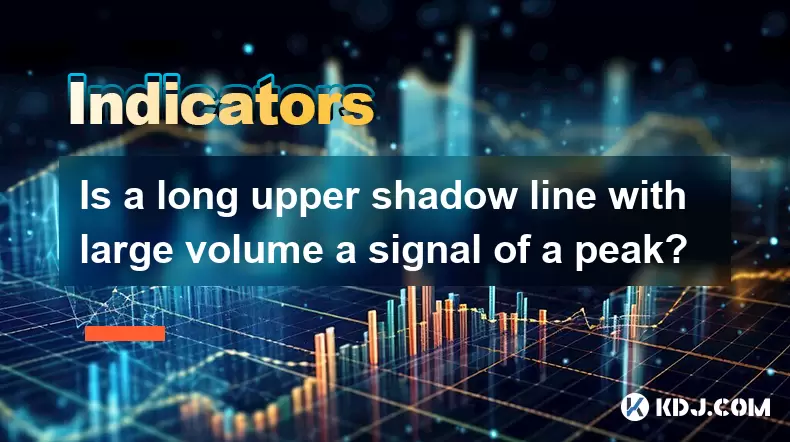
Is a long upper shadow line with large volume a signal of a peak?
Jun 17,2025 at 05:07am
Understanding the Long Upper Shadow LineA long upper shadow line, often referred to as a shooting star or inverted hammer depending on its location in a chart, is a candlestick pattern that indicates potential reversal from an uptrend. This pattern forms when prices rise significantly during the trading period but then fall back to close near the openin...

How to confirm the effectiveness of the average price line support in the time-sharing chart?
Jun 17,2025 at 12:56am
Understanding the Time-Sharing Chart and Its RelevanceIn cryptocurrency trading, time-sharing charts play a crucial role in analyzing short-term price movements. These charts typically display price fluctuations over a specific period, often ranging from minutes to hours. Traders rely on them to make quick decisions based on real-time data. The average ...
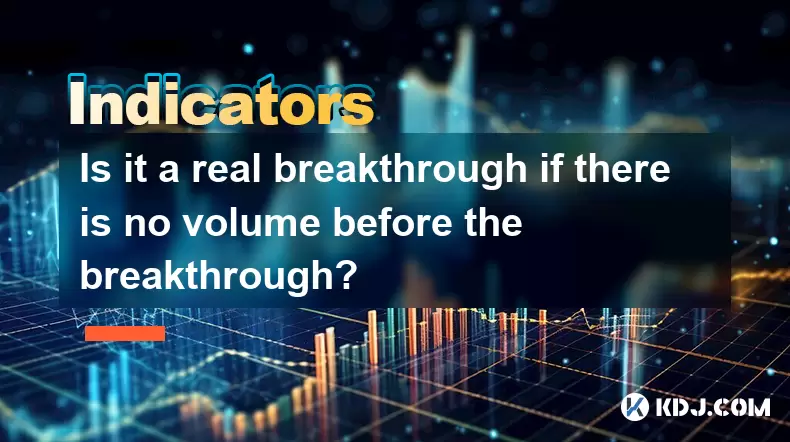
Is it a real breakthrough if there is no volume before the breakthrough?
Jun 17,2025 at 08:03am
Understanding the Concept of a Breakthrough in Cryptocurrency TradingIn cryptocurrency trading, a breakthrough typically refers to a price movement that surpasses a key resistance or support level. Traders often look for such events as potential signals for trend continuation or reversal. However, a crucial factor that determines the strength and reliab...

What does it mean when the momentum indicator breaks above the zero axis?
Jun 17,2025 at 12:43am
Understanding the Momentum IndicatorThe momentum indicator is a technical analysis tool used to measure the speed or velocity of price movements in cryptocurrency markets. It helps traders identify potential trend reversals, overbought or oversold conditions, and confirms existing trends. The indicator typically oscillates around a zero line, with value...
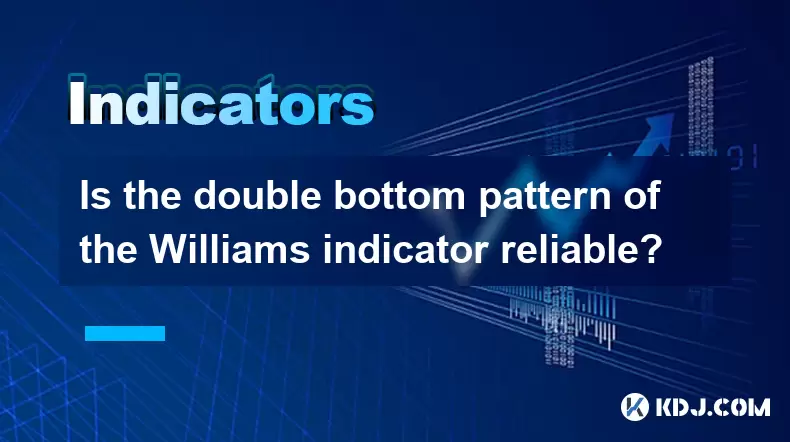
Is the double bottom pattern of the Williams indicator reliable?
Jun 17,2025 at 03:56am
Understanding the Williams Indicator and Its SignificanceThe Williams %R indicator, often referred to as Williams Percent Range, is a momentum oscillator used in technical analysis to identify overbought or oversold conditions in the market. Developed by Larry Williams, this indicator fluctuates between 0 and -100, with readings above -20 indicating ove...
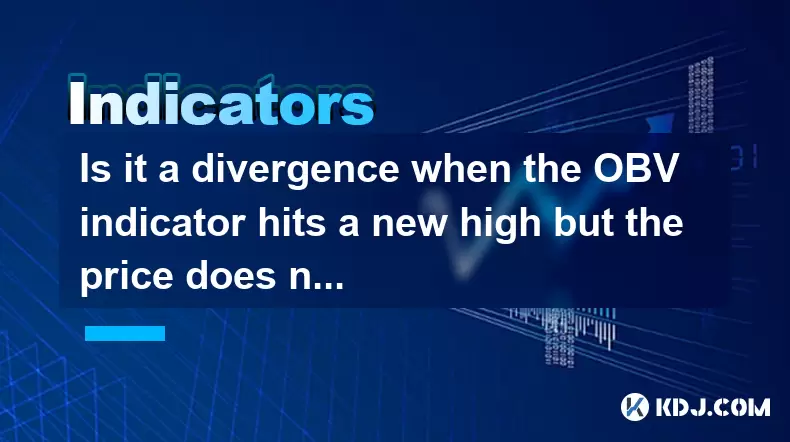
Is it a divergence when the OBV indicator hits a new high but the price does not rise?
Jun 17,2025 at 11:15am
Understanding the On-Balance Volume (OBV) IndicatorThe On-Balance Volume (OBV) is a momentum indicator used in technical analysis to predict changes in stock or cryptocurrency prices. It measures buying and selling pressure by adding volume on up days and subtracting volume on down days. The idea behind OBV is that volume often precedes price movement, ...

Is a long upper shadow line with large volume a signal of a peak?
Jun 17,2025 at 05:07am
Understanding the Long Upper Shadow LineA long upper shadow line, often referred to as a shooting star or inverted hammer depending on its location in a chart, is a candlestick pattern that indicates potential reversal from an uptrend. This pattern forms when prices rise significantly during the trading period but then fall back to close near the openin...

How to confirm the effectiveness of the average price line support in the time-sharing chart?
Jun 17,2025 at 12:56am
Understanding the Time-Sharing Chart and Its RelevanceIn cryptocurrency trading, time-sharing charts play a crucial role in analyzing short-term price movements. These charts typically display price fluctuations over a specific period, often ranging from minutes to hours. Traders rely on them to make quick decisions based on real-time data. The average ...

Is it a real breakthrough if there is no volume before the breakthrough?
Jun 17,2025 at 08:03am
Understanding the Concept of a Breakthrough in Cryptocurrency TradingIn cryptocurrency trading, a breakthrough typically refers to a price movement that surpasses a key resistance or support level. Traders often look for such events as potential signals for trend continuation or reversal. However, a crucial factor that determines the strength and reliab...

What does it mean when the momentum indicator breaks above the zero axis?
Jun 17,2025 at 12:43am
Understanding the Momentum IndicatorThe momentum indicator is a technical analysis tool used to measure the speed or velocity of price movements in cryptocurrency markets. It helps traders identify potential trend reversals, overbought or oversold conditions, and confirms existing trends. The indicator typically oscillates around a zero line, with value...

Is the double bottom pattern of the Williams indicator reliable?
Jun 17,2025 at 03:56am
Understanding the Williams Indicator and Its SignificanceThe Williams %R indicator, often referred to as Williams Percent Range, is a momentum oscillator used in technical analysis to identify overbought or oversold conditions in the market. Developed by Larry Williams, this indicator fluctuates between 0 and -100, with readings above -20 indicating ove...

Is it a divergence when the OBV indicator hits a new high but the price does not rise?
Jun 17,2025 at 11:15am
Understanding the On-Balance Volume (OBV) IndicatorThe On-Balance Volume (OBV) is a momentum indicator used in technical analysis to predict changes in stock or cryptocurrency prices. It measures buying and selling pressure by adding volume on up days and subtracting volume on down days. The idea behind OBV is that volume often precedes price movement, ...
See all articles

























































































